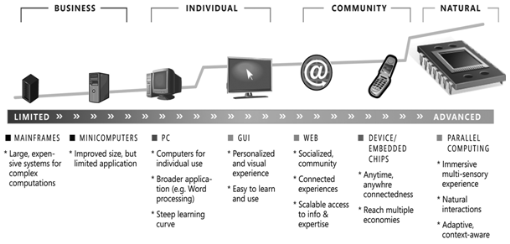
On June 7 I went to Rio de Janeiro to take a test on the next day regarding a public contest where I was disputing one of 36 vacancies for a Junior Systems Analyst - Infrastructure position at Petrobras.
The test started at 9:00 A.M. and ended at 1:00 P.M and took place at Estácio de Sá university - Campus Uruguaiana at Presidente Vargas Avenue that is located downtown. I stayed at a hotel called Planalto. It is located near the place where I did the test.
Petrobras is one of the major companies of the world. As of May 19, Petrobras became the world's sixth-largest company by market value. Its market value was $295.6 billion. Microsoft for example has a market value of $274.0 billion. You can see more details reading this new at Bloomberg site: Petrobras Tops Microsoft, Is Sixth-Biggest Company.
Petrobras's field of operation has a high demand because its principal product is petroleum. Yesterday the oil barrel achieved the highest price in history as can be read in Oil sets record above $140 a barrel on supply concerns.
Getting back to the public contest. Petrobras's test is in my humble opinion one of the hardest ones in Brazil in my area of specialization. Maybe it is the hardest one. :-) This was the second time that I participated in such public contests.
An organizing institution is responsible for the test creation and collection of the registration tax. The organizing institution responsible for the first test I did in 2007 was CESPE and this time the organizing institution was CESGRANRIO. I had to pay R$ 40,00 Brazilian Reais that is approximately $ 25,00 for the registration tax. I'm considering $1 dollar = R$ 1.60 as of the date of this post.
The test was comprised of 70 questions in the multiple choice form. From these 20 questions were about basic knowledge (BK) (10 Portuguese questions and 10 English questions). The other 50 questions were about specific knowledge (SK) related to system analysis - infrastructure.
The content that should be studied is described in the following table:
| Computer Network and Distributed Systems | Computer Network Architectures |
| Topologies |
| Connection and Transmission devices |
| QOS |
| ISO OSI model |
| TCP/IP Architecture and Protocols |
| TCP/IP Application layer: DNS, FTP, NFS, TELNET, SMTP, HTTP, LDAP, DHCP, IPSEC, SSH, SNMP and NAT |
| Basic notions about IPv6 |
| Storage concepts (NAS and SAN) |
| UNIX Environment | Installation and support to TCP/IP, DHCP, DNS, NIS, CIFS, NFS, network printing services |
| Installation and configuration of Apache server |
| Integration with Windows environment |
| Script languages |
| Microsoft Windows 2000/2003 environment | Installation and support to TCP/IP, DHCP, DNS |
| Active Directory, IIS, Terminal Service |
| File services and network printing |
| Integration with Unix environment |
| Script languages |
| Information Security | Physical and logical security |
| Firewall and proxies |
| Cryptography |
| VPN |
| Malicious software (Virus, Spywares, Rootkit, etc) |
| Intrusion detection systems |
| Computer Architecture and High Performance Computing HPC | RISC and CISC architectures |
| Processor organization |
| Memory organization |
| Concurrency concepts, parallelism and distributed computing |
| Flynn taxonomy |
| Distributed systems architecture: SMP and MPP |
| Basic concepts about agglomerate computing (Cluster) and grid computing (Grids) |
| Load balancing |
| Performance profiling |
| Project Management | Basic concepts |
| Resources allocation |
| Chronogram; |
| Analytical structure |
| Operating Systems | OS structure |
| Processor management |
| Memory management |
| File systems |
| Input and Output |
| Basic concepts about compilers |
| RAID |
| Databases | Data independency |
| Relational approach |
| entity-relationship approach |
| Triggers and Stored Procedures |
| SQL language |
| High availability concepts |
| Transactions management |
| Locks management |
| Performance management |
| Programming | Algorithms and data structures |
| Java code debugging |
| Notions about Software Engineering |
| Markup languages: HTML and XML |
| Notions about Java programming (JEE, Servelets, JSP and EJB) |
| IT Service Management | Concepts about the ITIL® library: Support and service delivery |
| COBIT processes domain |
| Logical Reasoning | Sentential and first order logic |
| Enumeration by resources |
| Counting: Additive and multiplicative principles |
| Information Security Management | General concepts |
| Information security policies |
| Information classification |
| Norm ISO 27001:2005 |
| |
The questions were graded according to the following table:
| Portuguese language | English language | Specific knowledge |
| Question | Points | Question | Points | Question | Points |
| 1 to 10 | 1.0 | 11 to 20 | 1.0 | 21 to 30 | 1.0 |
| | | | | 31 to 40 | 1.3 |
| | | | | 41 to 50 | 1.6 |
| | | | | 51 to 60 | 1.9 |
| | | | | 61 to 70 | 2.2 |
Despite the difficulty I think I performed well if I take into account that this was my second try.
Today I got the final result and my final grades were:
Basic Knowledge = 15 points = 75% of BK test.
I needed 12 points = 60% of BK test.
Specific Knowledge = 41.3 points = 51.63% of SK test.
I needed 48 points = 60% of SK test.
Result = BK + SK = 15 + 41.3 = 56.3 points
48 - 41.3 = 6.7 points to pass in the specific knowledge test.
Bellow I show the grades obtained by the candidates that passed the public contest:
| Specific Knowledge test grade | Classification |
| 61.5 | 1 |
| 61.4 | 2 |
| 61.2 | 3 |
| 59.6 | 4 |
| 56.4 | 5 |
| 55.8 | 6 |
| 55.6 | 7 |
| 54.8 | 8 |
| 54.5 | 9 |
| 54.2 | 10 |
| 54.1 | 11 |
| 54.0 | 12 |
| 53.8 | 13 |
| 52.6 | 14 |
| 52.1 | 15 |
| 51.8 | 16 |
| 51.4 | 17 |
| 51.2 | 18 |
| 50.9 | 19 |
| 50.7 | 20 |
| 50.7 | 21 |
| 50.7 | 22 |
| 50.7 | 23 |
| 50.6 | 24 |
| 50.5 | 25 |
| 50.1 | 26 |
| 50.1 | 27 |
| 50.0 | 28 |
| 50.0 | 29 |
| 49.9 | 30 |
| 49.9 | 31 |
| 49.6 | 32 |
| 49.6 | 33 |
| 49.5 | 34 |
| 49.5 | 35 |
| 49.4 | 36 |
| 49.3 | 37 |
| 49.2 | 38 |
| 49.2 | 39 |
| 49.2 | 40 |
| 49.1 | 41 |
| 49.1 | 42 |
| 48.8 | 43 |
| 48.7 | 44 |
| 48.7 | 45 |
| 48.7 | 46 |
| 48.7 | 47 |
| 48.7 | 48 |
| 48.5 | 49 |
| 48.4 | 50 |
| 48.4 | 51 |
| 48.3 | 52 |
| 48.1 | 53 |
| 48.1 | 54 |
| 48.0 | 55 |
| 48.0 | 56 |
I almost got there. For a difference of 6.7 points I didn't pass the specific knowledge test, but I'm happy with my accomplishment. I'm a young guy and for sure if it is God's will I'll get there in the future. I'll keep studying. That's really necessary!
There are lots of public contests happening every year and not only related to Petrobras.
Some interesting facts about this public contest:
There were 5866 candidates disputing 36 vacancies for this specific role within Petrobras.
Candidate/vacancy relation = 163
Only 56 candidates were approved = 0.96% of candidates. Practically 1%.
Total collected with the registration tax money = R$ 40,00 * 5866 = R$ 234.540,00 =
$ 146.587,00.
Just to close this post - you may ask: Why someone would dispute a so wanted vacancy? The answer is easy: Petrobras pays a worthy salary, for example for this specific position (Junior System Analyst) the salary value is R$4.798,64 = $ 2998.75. Here in Brazil this is a good value for someone who is beginning his career. Besides that the company has many advantages (salary bonus, paid courses, health plan, etc) if compared with others. Generally who gets a job through a public contest will end their career in the company they took a test for. It is a permanent job.
As you see only the ones that study hard get a job at such companies and such companies have the best committed employees.





 The crescent demand for enterprise management software has as key factor big companies, which need to manage millions of records trying with that: find a better way of working with so great amount of information available in their huge databases and get to the target of their business.
The crescent demand for enterprise management software has as key factor big companies, which need to manage millions of records trying with that: find a better way of working with so great amount of information available in their huge databases and get to the target of their business. The
The 




